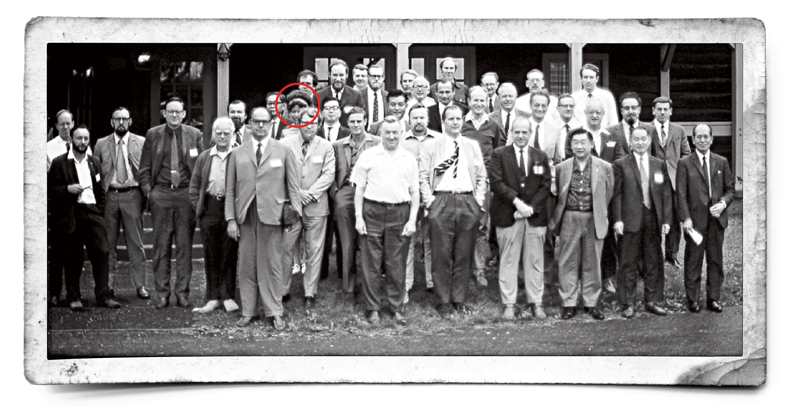For 36 years Sheila Minor Huff toiled in perfectly content anonymity. As a biologist for the federal government, she worked every day with an eye toward environmental conservation—not celebrity. But in March, a dozen years after she retired, Huff, CAS/BS ’70, lived her 15 minutes of fame.
It started when illustrator Candace Jean Andersen asked the National Oceanic and Atmospheric Administration for some information for a book she was researching. Among the documents she received was a photo from a 1971 conference in Virginia on the biology of whales. In the snapshot, 37 men who attended the event were identified; the one woman there, her black face partially blocked by a man in front of her, was not.
“My curiosity nagged at me, not knowing who the woman in the photo was, or perhaps what she may have contributed to the conference,” Andersen told the New York Times.
Where to start looking?
“Hey Twitter I’m on a mission,” she posted. “The woman in this photo was an attendee at a 1971 International Conference on Biology of Whales. She is the only woman, & the only one captioned ‘not identified’ in the article I found the photo in. All the men are named. Can you help me know her?”
Her plea was retweeted thousands of times and eventually seen by Dee Allen, a research program officer at the Marine Mammal Commission. She contacted Don Wilson, the emeritus curator of mammals at the Smithsonian National Museum of Natural History.
He knew the woman in the photo.
“Sheila was working at the museum in the Division of Mammals when I first started there in September 1971,” he told the Times. She was “an excellent technician.”
With the mystery solved, the world began learning about Huff’s accomplishments. She was blazing paths long before Andersen’s tweet. Often, Huff was the only woman—and the only African American—in the office. A Washington native, she was a cheerleader at AU before starting her career in biology. In the years after the conference (which her boss invited her to attend but not present at), she earned a master’s degree at night while working full-time, and eventually she became an environmental protection specialist at the US Department of the Interior.
She seems to have gotten a kick—if not a thrill—out of her Andy Warhol moment.
“The work I was doing was unique for women, especially women of color,” she says. “I always knew who I was, what I had done, and how I contributed to the environmental sciences.”
One tangible development did stem from this story. Huff, 71, opened a Twitter account.
“I had to see what all the fuss was about.”
